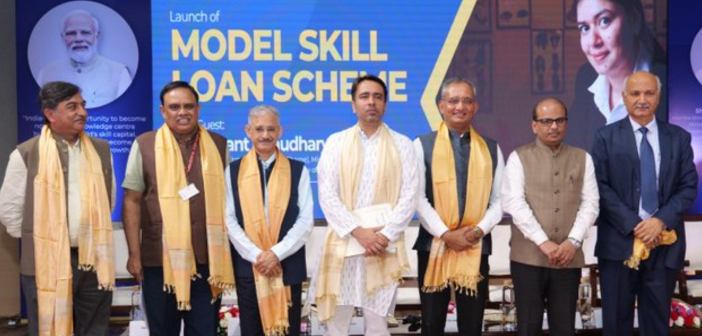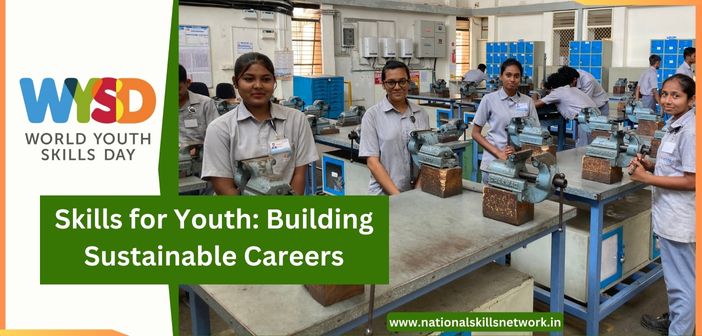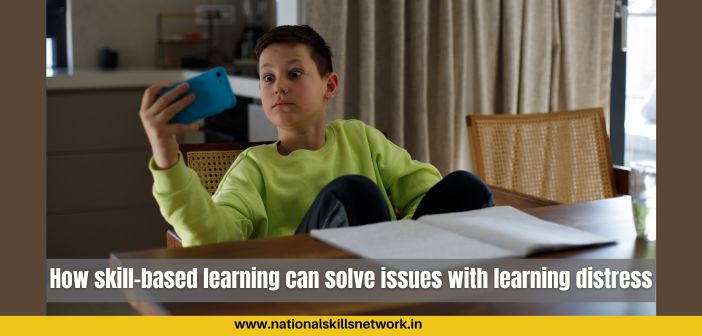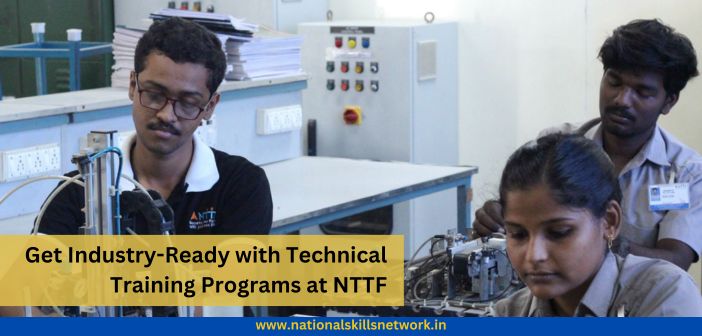
“Through skilling and upskilling artisans and weavers with industry-based training programs, our aim is to make the beneficiaries self-reliant by linking them with the industry and providing a platform for showcasing their products at the national and international trade fairs”, says Mr. Krishan Kumar, CEO, Handicrafts and Carpet Sector Skill Council (HCSSC).
To know and understand more about the initiatives from the HCSSC, capacity building of artisans and weavers, curriculum development for the sector at the school level, etc. we conversed with Mr. Krishan Kumar, CEO, Handicrafts and Carpet Sector Skill Council (HCSSC). Read on to know more.
Q: What is your vision for the handicrafts and carpets sector in scaling up training and enabling livelihoods in different regions of India, along with awareness creation about the export potential of this sector?
A: Under the flagship skilling scheme Pradhan Mantri Kaushal Vikas Yojana (PMKVY 3.0) by Hon’ble Prime Minister Shri. Narendra Modi in a bid to empower the country’s youth with employable skills, HCSSC, since its inception has been working in the traditional and heritage crafts clusters of the country involving the industry members and stakeholders to strengthen the Handicrafts and Carpet Sector.
As you are aware, Handicrafts and Carpet is the second-largest unorganized sector after Agriculture with huge potential for export as 60-65% of the handicrafts products and 90% of the carpets are exported to the countries such as the US, UK, UAE, Canada and many more.
To cater to the actual need of the artisans and the industry, the Council has started an industry-based upskilling program. The Council has also started developing the Qualifications on traditional dying crafts so that the training for the cluster development program can be planned.
On the other hand, the Council is also identifying the cluster-wise prominent crafts to implement the skilling and upskilling program to provide benefits to local artisans and weavers and help in strengthening the local economy by bringing these local artisans and weavers into the mainstream and improve their livelihood.
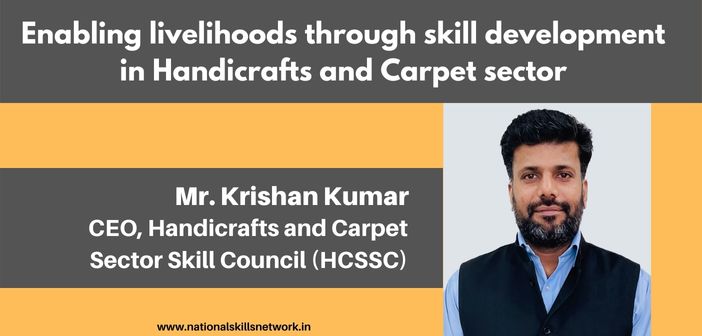
Q: How do we drive the importance of acquiring the right skills in the handicrafts and carpets sector? This is in the backdrop of the fact that most artisans pick up the craft through their family members/traditions and they need to become more professional, and productive and adopt new ways of production to survive in the market.
A: Handicrafts and Carpet is a rural-based cottage industry set-up comprising artisans and weavers and it is very important to identify and acquire the right skill for the right candidate. As a matter of fact, the artistic skills are acquired by the artisans from their family members forming a family tree for a particular craft.
To compete with the international market, there is a requirement to not only train the artisans but also reskill and upskill them as per international standards. Such upskilling programs by the Council include the components of innovation in craft, soft skills, digital literacy, communication skills and entrepreneurial skills.
Q: What are some of the key initiatives from HCSSC to strengthen the skilling and training ecosystem in the handicrafts and carpets sector?
A: The Council has recently trained approximately 2200 artisans in Kashmir on traditional dying craft Namda, to revive the craft, and make it export-ready. Similarly, the Council has upskilled approximately 2500 artisans in Nagaland on traditional and heritage bamboo crafts.
Both the programs are industry-based skilling and upskilling programs under PMKVY 3.0. With an aim to skill and upskill artisans and weavers through industry-based training programs in Nagaland and Kashmir and revive the traditional Namda craft of Kashmir, our prime objective is to make the beneficiaries self-reliant by linking them with the industry and providing a platform for showcasing ready-to-sell products in the national and international trade fairs.
Along these lines, the products made by these artisans and weavers were exhibited during the 53rd IHGF Fair 2022 at India Expo Centre and Mart, Greater Noida to provide an international platform for the artisans and their handmade products as a part of forwarding linkage.
Similarly, HCSSC is skilling and upskilling artisans and weavers in association with various state skill development missions and DAY-NULM departments. The Council has also conducted the RPL Program under the initiative of “Udne Do” of SANKALP for the Jail inmates of Nashik Central Jail on the job role Carpet Weaver Tufted, sponsored by Maharashtra State Skill Development Society.
Also read:
How HCSSC promotes skill development in handicraft and carpet sector
Q: Is entrepreneurship promotion and support a part of the vision for HCSSC since this sector mostly includes micro, small and medium entrepreneurs who need different linkages to improve their business.
A: Yes, HCSSC in all its training programs, be it skilling or upskilling, tries to provide backward linkage through procurement of raw materials, providing soft skills, marketing knowledge and subsequently forward linkage of these artisans and weavers with the national and international markets through its industry members. We have also proposed future job roles in various subsectors of handicrafts including upcycling and e-waste artisans to train the artisans and weavers and create a better-skilled workforce for the industry.
I would also like to add that there is a large scope for the growth of the indigenous toys sector which will create significant employment opportunities in the country. The government of India’s Atmanirbhar Abhiyaan is a significant step in accelerating this process.
One of the important components of this process is to identify the competencies required for this industry and then accordingly plan to create a pool of skilled personnel for this sector.
For this purpose, HCSSC has identified Indian toy industry needs and has developed qualifications in toy-making under various sub-sectors of wood, ceramics, glass and traditional toy maker.
Q: Introducing craft-centred learning is one of the key recommendations of NEP 2020. How is HCSSC facilitating the curriculum and learning content for the school level and what are the subjects that are offered currently?
A: Since HCSSC’s efforts have always been focused on adding significant value to the idea of nation-building through vocational education and training, arts and crafts have always been a part of vocational education. The Council has developed Qualification Packs (QP) and National Occupational Standards (NOS), training materials, a student handbook and online training modules on the job roles of Fashion Jewellery and Paper Mache crafts for CBSE. Approximately, 650 Schools of CBSE across India have shown interest to run skill vocational training programs in their respective schools in traditional crafts of Handicrafts and the Carpet sector. The Council is also working closely with various state boards and Universities to introduce the Qualifications of Handicrafts and Carpet as a part of the academic curriculum.






